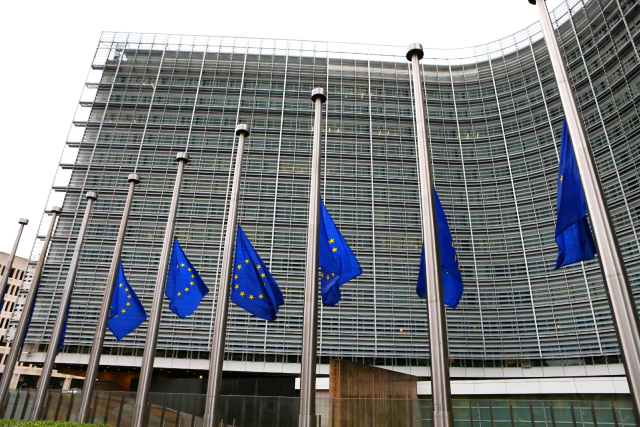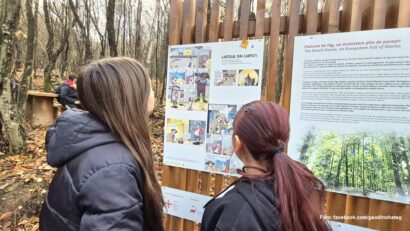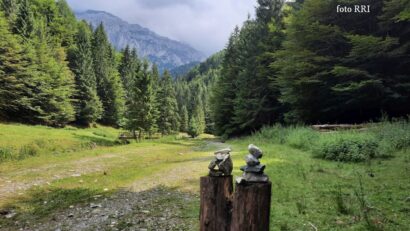Romania’s 10-year plan on energy and climate
The European Commission has examined Romania's energy plan

Eugen Coroianu, 27.11.2020, 14:00
The European Commission has recently sent to Bucharest
an analysis of Romania’s National Plan on Energy and Climate Change, 2021-2030.
The analysis has identified several flaws, while the Commission has offered recommendations
to that end. Romania’s plan, which has come under close scrutiny as of late,
defines the way Romania will take action in the next decade, especially in the
field of energy, against the backdrop of a global climate crisis. Having
examined several chapters, the Brussels officials criticized the authors’ lack
of ambition, since the set targets they have come up with were below the standards recommended by the
European Union, even though those standards were a little bit higher as
compared with the standards set in the previous reports. Accordingly, as
regards renewable energy, the Commission has found out Romania continued to
maintain a low-level set target, standing at 3.7%, although the country’s
potential was bigger than that. Estimates have revealed that by 2030, Romania
could have reached a renewable energy level standing at 34%. Even if the plan
details the measures targeting the increased importance of green energy in the
fields of electricity, heating and transport, the European experts have pointed
to the fact that there was no clear-cut quantification of that.
Greenpeace Romania
climate and energy campaign coordinator, Vlad Catuna:
”Romania’s strategy in the field of
energy and climate basically focuses on fossil fuels and nuclear energy,
instead of focusing on green renewable sources of energy, given that Romania,
Europe and the whole world are facing the effects of climate change. And when I
say the effects of climate change, it is not only the melting of glaciers or
the rise of ocean water level that I have in mind, but what I do have in mind
are the effects we are beginning to feel also here, in Romania. And at that,
what we have in mind are the dried-up lakes of Nuntasi and Iezer or southern
Oltenia, where desertification is in full swing, if we take into account that
we had to cope with storms and heavy downpours in the summer, or the drought we
also had to cope with. For Romania, this year was one of the droughtiest ever
to have been reported for this country. Against this backdrop, where we have to
cope with such effects, Romania must come up with an ambitious plan, where
green energy should be prioritized at the expense of dirty energy. In effect,
when coal is still mentioned in Romania’s part of the energy mix, or when we
come up with projects prioritizing natural gas extraction in the Black Sea,
that means we have a very serious problem.”
The transition to green energy is not an easy process,
nor is it a cheap one. Everybody knows ecology is expensive and proof of that
is the price of the bio products on display on shelves in specialized shops.
Romania’s great advantage is that the European Union finances these
transformations, moreover, Romania has a good potential, mainly because of its
geographic position.
Vlad Catuna:
We have a tremendous potential
in terms of wind power, mention is being made of the offshore renewable energy
potential of the Black Sea, and we can also speak about a tremendous solar
energy potential in the southern part of the country. You’re quite right when
you say: yes, we need money and the good thing is that the European Commission,
through its European Green Deal, offers Romania large sums of money for this
kind of energy transition. We want it to be one from fossil fuels straight to
the green energy. It will be very expensive and very difficult for us to go
through an intermediary transition, through a kind of transition, where
initially, we rely on gas instead of passing straight to renewable green
energies. And that, because we ‘ve got time on our hands, we have the necessary
resources, we have financing from the European Commission and we have the
potential proper to implement such an energy transition.
With respect to another chapter, that of energy
efficiency, the European Commission has found out Romania has enhanced its
level of ambition regarding the national contribution to the 2030 community
objective, as compared to the plan project, with is most welcome. However, the
contributions to the primary energy consumption and the final energy
consumption are not at all ambitious. As for the positive side, the final plan
includes useful info on buildings, pointing to the intention of going beyond a
renovation rate standing at 3 or 4%. However, according to the European
officials, Romania has not as yet come up with a long-term renovation strategy.
The Commission also mentioned the fact that it encouraged measures regarding
the energy efficiency of the heating networks. Eventually, the plan does not
offer sufficient info on the quality of air and the interaction between the
quality of air and the atmospheric emissions policy. Yet there are also
examples of good practices, mainly due to the fact that the document includes
elements of the European Green Deal for agriculture, mainly through the
promotion of ecological farming and the limited use of fertilizers. Greenpeace
Romania climate and energy campaign coordinator, Vlad Catuna, sounded upbeat
about all that, stating things will no longer be as they are at present,
because the new European Climate Law will come up with much more ambitious set
targets. Once implemented, the law will compel the Romanian authorities to step
up the energy transition process, to renounce coal and gas and invest in green
energy.
(Translation by Eugen Nasta)
—–






























